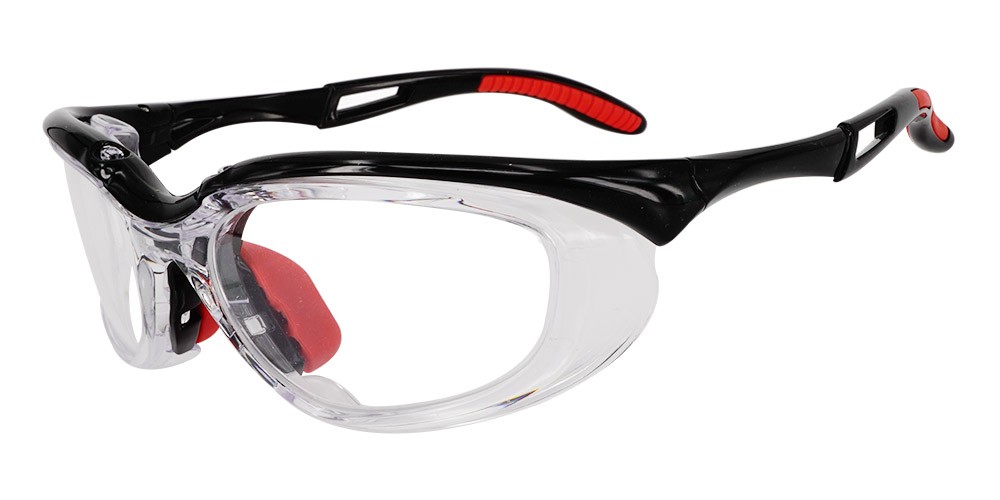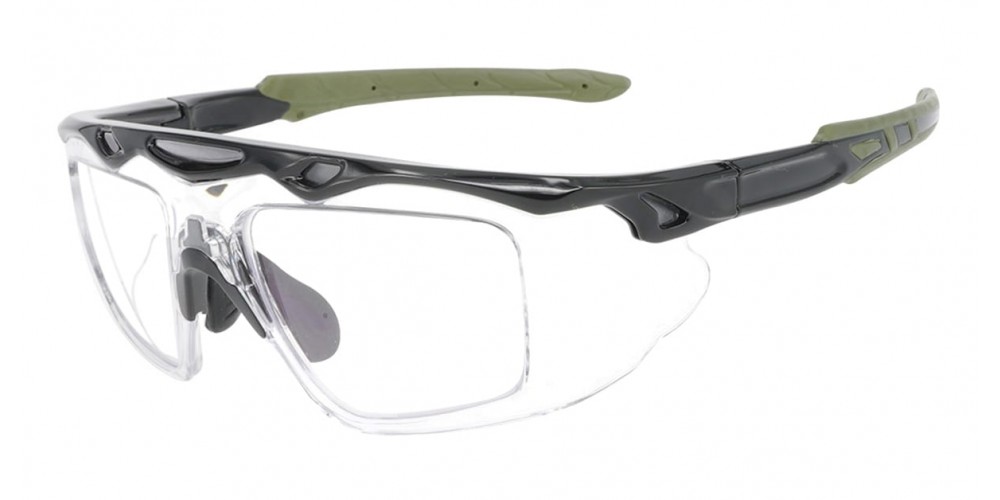Vision Protection and Safety Glasses


There has been a long-standing misconception that wearing sports protective glasses might harm your eyesight. There is reasonable worry among workers about whether it is healthy for their eyes or not to be looking through a "plastic" lens during their working day. This is a valid issue. The answer to that question is yes, wearing safety glasses will not impair your eyesight, and it is entirely safe for your eyes.
But it can cause some pain, such as eye problems and eye tiredness, which may hurt. There are many significant issues: Eye strain results from soreness and exhaustion in the eyes, commonly accompanied by a headache due to the condition.
Eye tiredness occurs when the muscle tissue in your eyes becomes worn out due to prolonged usage, similar to what happens to other muscle tissue in your body when they're subjected to strenuous exercise or misuse.
Varieties of eye protection available in the market
There are three primary forms of eye protection available, each with its own pros and cons. Safety glasses, face shields, and goggles are all examples of protective eyewear. Safety glasses are built of shatter-resistant lenses made of polycarbonate or propionate plastic, and they contain side shields to protect the wearer.
Reasons why eye tiredness might occur while wearing safety glasses
Incorrect size
It's a frequent belief among safety departments that they can purchase one size of eyeglasses and expect that it will be the perfect fit for every worker. Workers may face difficulties as a result of this way of thinking.
Incorrect shade of blue
Various tints may be used depending on the type of job you perform, the amount of glare you encounter, and how often you work outside. As your eyes get more used to their surroundings, the intensity they must concentrate and refocus is reduced due to the proper hues. Eye strain or weariness might occur if you don't have the appropriate tint on your safety glasses.?
Lenses with scratches
In addition to workplace accidents, eyewear wear and tear and even the wearer's negligence may result in scratched lenses. For various causes, the scratched polycarbonate glass might cause eye strain and fatigue. Do not wait to repair any cracked or scratched safety eyewear lenses!?
Lenses with poor optical clarity
If you're wearing low-cost eyeglasses, the polycarbonate lenses may not be as clear as they may be in terms of optical clarity. Be careful if you put on a pair of safety eyewear and the lenses seem foggy or distorted. Signs of poor optics may be seen in this way. Excellent optical quality lenses eliminate aberrations and defects, allowing the wearer to see as naturally as possible.?
Symptoms and causes of eye irritation while wearing safety goggles
If you're here, there's a good chance you've had a bad experience using safety goggles before. The following are symptoms of eye strain and tired eyes:
-
Eyes that are either dry or watery
-
A stinging in the eyes
-
Not being able to concentrate on any task
-
Vision is hazy
-
Sensitivity to light
No one should be surprised that eye tiredness and eye strain are directly related to the quality of your eyeglasses. For long periods on the job, wearing inexpensive, low-quality safety eyewear might cause pain.
Even while eye strain does not cause lasting harm to the eyes, it will surely hurt the productivity of your task. It is considered a waste of time in the business environment to be required to set down what you are doing and remove your eyeglasses to refocus or refresh your vision.
Eye strain may degrade vision to the point that you are less aware of your surroundings, making it more challenging to identify potential dangers that might have severe implications if you are not careful.

A headache that is felt "in the back of the eyes."
It should come as no surprise that eye fatigue and eye tension have a significant impact on the overall pleasantness of your eyeglasses. For hours at a time on the job, you'll most likely find yourself enjoying the discomfort of wearing low-quality, unappealing protective eyewear.
Even if your eyes are not wholly injured as a result of eye stress, it will have a negative impact on your healthy life. The amount of stress and pain is calculated based on the time spent stopping your work and removing your eyewear to get some relief.
Eye stress may cause reduced vision in extreme conditions, primarily due to a decline in visual awareness of your surroundings. It can also cause your life by impairing your average ability to detect and avoid protective dangers, which can have life-threatening effects if not addressed promptly.
Which safety glasses are the most suitable for usage at home?
To ensure you get the best protection, you should buy safety frames and lenses certified for high impact. It's easy to find non-prescription safety eyewear at most hardware and sports goods stores if you don't need prescription safety glasses or wear contact lenses.
These glasses are usually made of polycarbonate, which is very lightweight. They are comfortable and come in many different frame styles that look good. People who spend money should choose models with a high impact rating to get the most protection for their money. If you have presbyopia, you may even be able to get glasses that have a bifocal reading area.
Anti-reflective coating helps to keep lens reflections from being distracting. This may be good for some activities that require safety eyewear. On the other hand, AR coating may make some lenses less resistant to damage. After the coating has been put on, impact resistance is significant.
Following the coating application, your eye doctor should check to see if the lenses are satisfactory by the optical lab. You must have a clear vision. Investing in eye and vision protection will pay dividends in the long term. It will reduce the likelihood that your eyes will be damaged in a way that could be potentially dangerous.
What kind of lens material is the most suitable for safety glasses?
When it comes to safety eyewear, polycarbonate is the best lens material. Because this material is less than half the weight of glass, it is more comfortable to wear than traditional eyeglasses. The impact resistance of polycarbonate lenses is superior to that of glass lenses.
Remember that polycarbonate has a softer lens material than glass. So, you have to be gentle while handling it. Polycarbonate lenses will scratch more quickly than glass lenses, even if it comes with a scratch-resistant coating.
Conclusion
You can purchase safety glasses with a prescription from an eye doctor or an optical retailer. Once again, pick safety eyewear with a high impact rating for the most excellent possible protection. A safety-rated progressive lens is available for anyone over 40 who has bifocal prescription safety glasses.?
These lenses allow you to see well at all distances without annoying bifocal. Consider a frame with side shields to protect your eyes from flying particles. No matter whether you are mowing lawns, using power trimmers, or using any other power equipment, it should save you at all costs.











